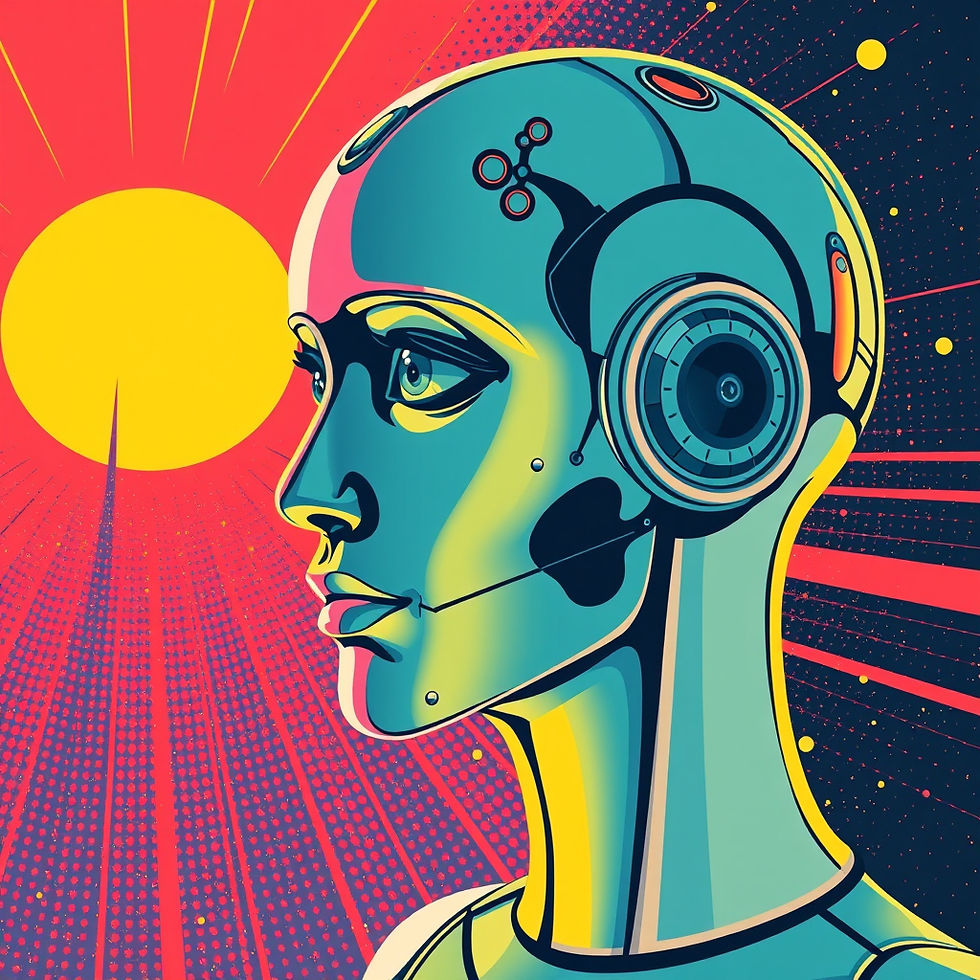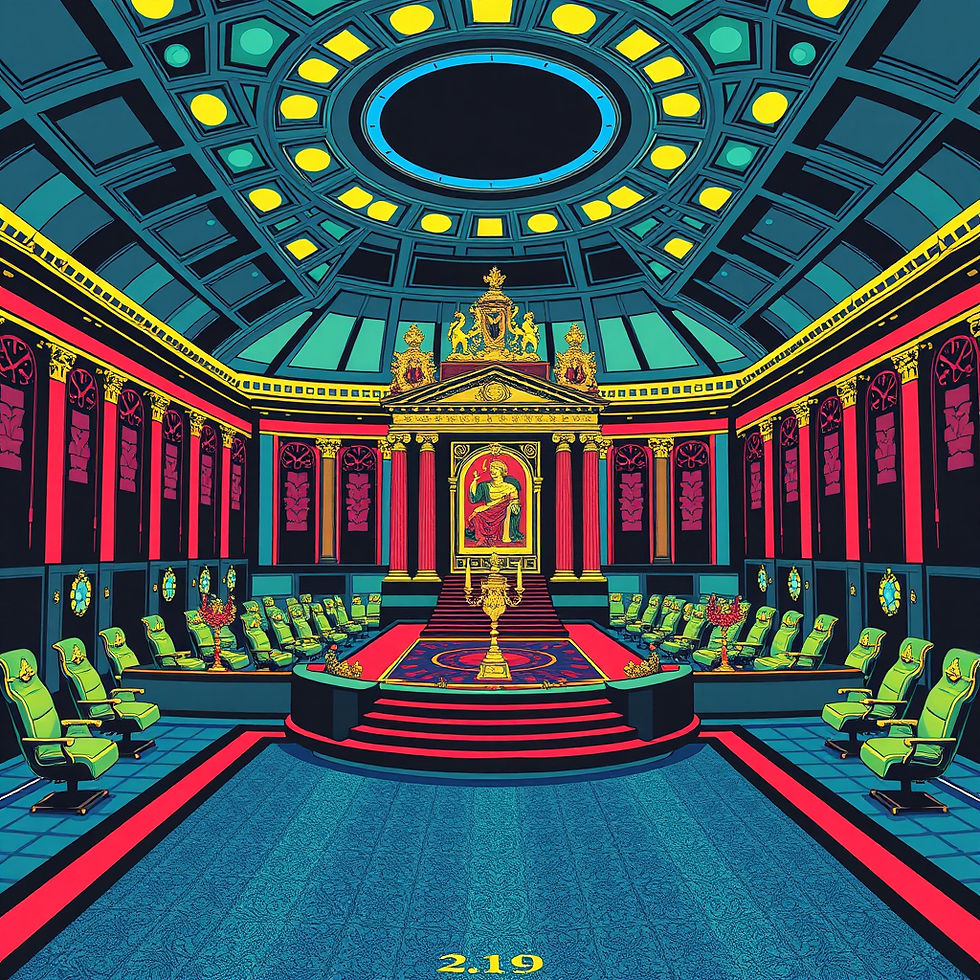Algorythm/ Text-to-X AI
- Kat Usop

- Jul 20, 2025
- 4 min read
Imagine needing a vibrant cityscape for a new marketing campaign, a dramatic score for your short film, or even just a new set of character animations for your game. Instead of commissioning artists, composers, or animators and waiting weeks, you simply type a description: "A bustling futuristic city at dusk, with flying cars and neon signs, set to an upbeat synthwave track, featuring a heroic robot animation." Moments later, you have all of it. This isn't science fiction anymore; it's the rapidly unfolding reality of Text-to-X AI.
"Text-to-X" refers to a burgeoning category of Artificial Intelligence models that take simple text prompts as input and generate diverse forms of output. While text-to-image generators like DALL-E, Midjourney, and xAI's Aurora (released December 2024) have captivated the public's imagination, the "X" is expanding at an astonishing rate.
We're now witnessing impressive advancements in:
Text-to-Video: AI like Sora and Veo are turning written descriptions into dynamic, realistic video clips, promising to revolutionize filmmaking, marketing, and content creation.
Text-to-Audio/Music: From crafting custom soundtracks to generating realistic voiceovers with specific emotions, AI is empowering creators to produce audio content like never before.
Text-to-Code: Developers can now prompt AI to generate functional code snippets or even entire applications, accelerating software development and democratizing app creation.
Text-to-3D Models: The ability to instantly generate 3D assets from text is on the horizon, with profound implications for gaming, virtual reality, and industrial design.
How Does the Magic Happen?
At their core, these Text-to-X models are built on incredibly sophisticated neural networks, particularly large language models (LLMs) and diffusion models. They are trained on vast datasets containing billions of text-X pairs (e.g., image captions and images, video descriptions and videos). This extensive training allows them to learn the intricate relationships between language and different media formats. When given a text prompt, the AI "understands" the context and concepts, then generates content that aligns with that understanding, often through a process of refining noise into a coherent output.
Transforming Industries, One Prompt at a Time
The applications of Text-to-X AI are breathtakingly diverse:
Creative Industries: Artists and designers are using it for rapid ideation, generating mockups, storyboarding, and even producing final assets. Musicians can experiment with new sounds and compositions, while writers can visualize scenes or characters from their prose.
Marketing and Advertising: Campaigns can generate countless variations of visual or video ads, personalized content for different demographics, compelling copy, and even full animated explainers in seconds, dramatically reducing production time and costs.
Film and Entertainment: Filmmakers can quickly prototype scenes, visualize special effects, or even generate entire animated sequences. Game developers can create vast libraries of 3D assets, textures, and character models from simple text prompts, speeding up world-building and development cycles.
Education and Training: Creating custom educational materials, interactive simulations, and engaging learning experiences becomes more accessible. Imagine generating historical battle recreations or molecular interactions directly from text for a science class.
Software Development: Developers can rapidly prototype user interfaces, generate boilerplate code, create function documentation, or even debug by prompting the AI with problem descriptions, significantly speeding up their workflow.
Fashion and Product Design: Designers can iterate on new product concepts, clothing patterns, or architectural layouts by simply describing their vision, instantly generating visual models for review.
Accessibility and Personalization: Text-to-X tools can create custom content for individuals with diverse needs. For example, generating visual aids for text-based information for visually impaired users, or creating personalized learning modules tailored to an individual's specific learning style and pace. This opens up new avenues for inclusive content creation.
Healthcare and Medical Visualization: Imagine doctors or researchers being able to generate 3D models of organs from medical reports or create animated simulations of complex surgical procedures from written descriptions, enhancing understanding and training.
Journalism and Media: AI can assist in generating visual summaries of news articles, creating infographics, or even producing short video explainers for complex topics based on news reports, allowing journalists to focus on in-depth reporting.
Everyday Use: From generating unique avatars for social media to creating personalized greeting cards with custom visuals and audio, Text-to-X tools are increasingly integrated into our daily digital lives, making creative expression accessible to everyone.
The Road Ahead: Excitement and Responsibility
The future of Text-to-X AI is undoubtedly multimodal. Models like Google's Gemini and xAI's Grok are already demonstrating the ability to understand and generate across various modalities simultaneously, mirroring how humans perceive the world. This will lead to even more intuitive and powerful AI assistants that can respond to complex queries with integrated text, images, audio, and video.
However, with great power comes great responsibility. The rapid evolution of Text-to-X also brings forth critical ethical considerations:
Bias and Fairness: Ensuring that generated content does not perpetuate harmful stereotypes or biases present in training data.
Misinformation and Deepfakes: The ability to create highly realistic fake content raises concerns about the spread of misinformation and the erosion of trust in digital media.
Copyright and Authorship: Questions arise regarding the ownership of AI-generated content and the use of copyrighted material in training datasets.
Transparency and Explainability: Understanding how and why AI generates specific outputs is crucial for accountability and trust.
As we stand in mid-2025, Text-to-X AI is no longer just a fascinating technological novelty; it's a transformative force. Its continued development promises to unlock unprecedented levels of creativity and efficiency across nearly every sector, while simultaneously demanding thoughtful consideration of its societal implications. The conversation around responsible AI development is just as important as the innovation itself.



Comments